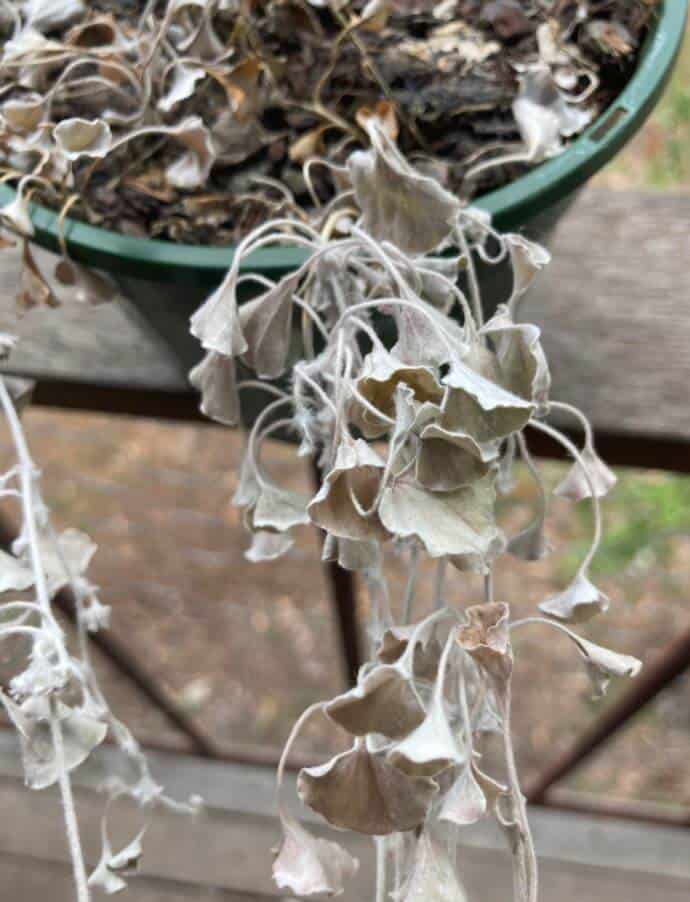Last Updated on June 19, 2023 by a Friendly Gardener
The Dichondra Silver Falls is a lovely cascading plant that also makes a lovely ground cover. If your Silver Falls plant shows symptoms of distress such as damaged foliage, drying stems, or yellow or brown leaves, you need to intervene quickly before your plant dies.
The Dichondra Silver Falls are hardy plants and are even somewhat drought tolerant after they are established in the garden bed or container. Nonetheless, they will weaken and become susceptible to infections if their environmental conditions are not guaranteed.
Symptoms of a Dying Dichondra
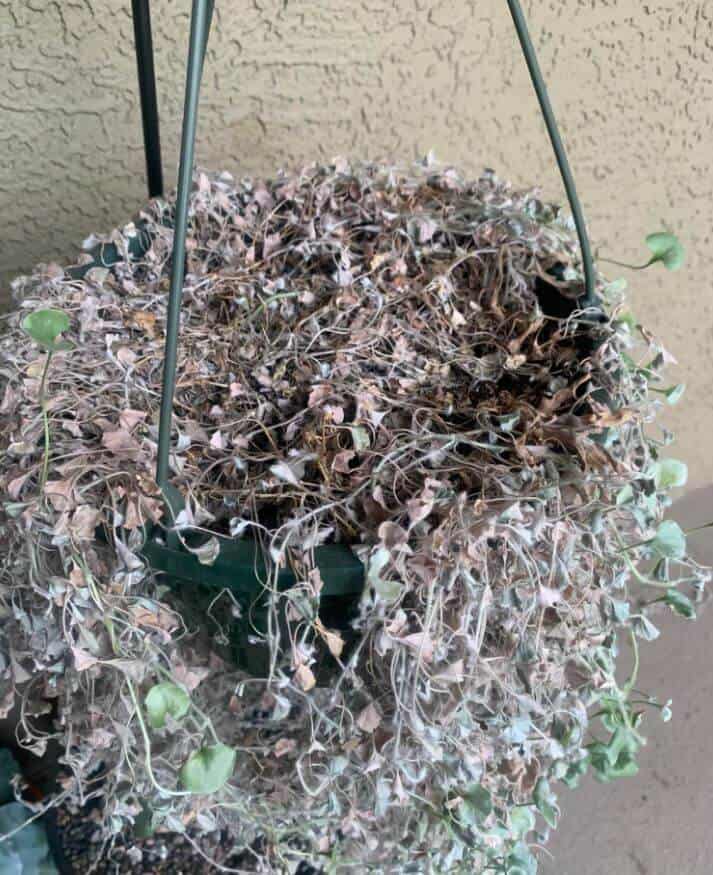
Before your Silver Falls plant fails, it will exhibit specific symptoms of its distress, signaling a need for immediate intervention. Here are several symptoms to watch out for.
-
Brown Leaves
Brown foliage is a serious sign that your plant is dying. Underwatering, overwatering, insufficient fertilizer, and damage to root systems can all cause foliage to turn brown. Control the soil bed for dryness or excessive moisture. If the soil bed appears to be fine, your soil bed may be lacking in nutrients, especially if you have not fed your plant within the last year with an appropriate fertilizer.
-
Damaged Foliage
Damaged leaves may be symptomatic of a pest infestation. Caterpillars, mealybugs, slugs, and snails are attracted to this plant and may decide to feed on foliage. While these plants are hardy if you note holes or bite marks on leaves, a pest infestation may be the reason.
If you suspect bug infestations, rinse your plant with a garden hose jet spray or shower head. Insecticidal soap or a light dishwater soap mix can also be sprayed on your Silver Falls plant to eliminate bugs. Neem oil is also an organic solution.
-
Drying Stems
A dried or drying stem is the final stage of a dying Silver Falls plant. When a brownish color extends from the foliage into the stems, your plant is already severely damaged. Sometimes brown stems can be due to aging. If this is the case, prune them off. If the soil is a heavy clay mix, dried out, or lacking in nutrients, these conditions can all contribute to dried-out stems.
-
Yellowing Foliage
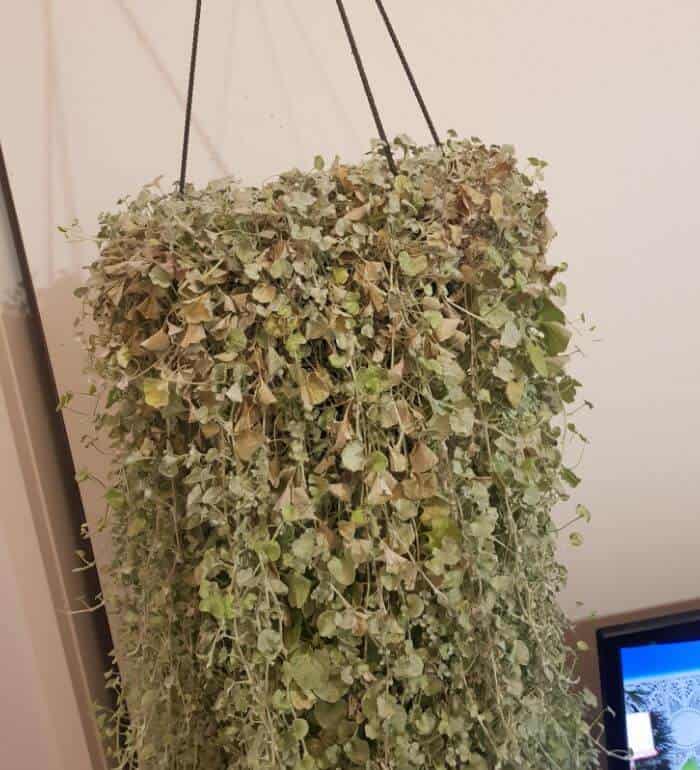
Yellowing leaves are generally an indication that a plant is suffering. It can be symptomatic of a lack of water and dry soil, as it can signal overwatering and insufficient nitrogen. Check the soil by putting your finger in the soil up to the second knuckle. If the soil feels soggy, your need to check for root rot and quickly repot your plant in fresh soil. If the soil is overly dry, try a deep soak.
Common Causes of a Silver Falls Plant Dying
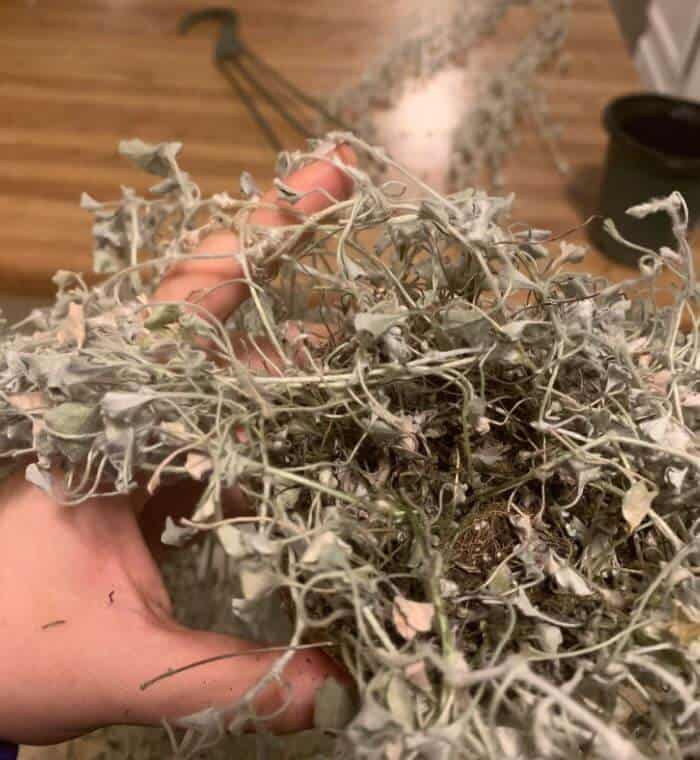
Overwatering, insufficient light, and improper soil are the most common causes of a Silver Falls plant dying.
Improper Soil
Poor soil quality is a problem and can cause a plant to fail. These plants prefer dryer conditions and will suffer when potted or grown in a garden bed in soil with little moisture retention or in heavy clay-type soils. Succulent soils drain too rapidly leaving root systems with insufficient moisture. Clay soils retain too much water and can lead to root rot. If you are planting in a garden bed with clay soil, amend and work the soil with generous amounts of compost.
Insufficient Sunlight
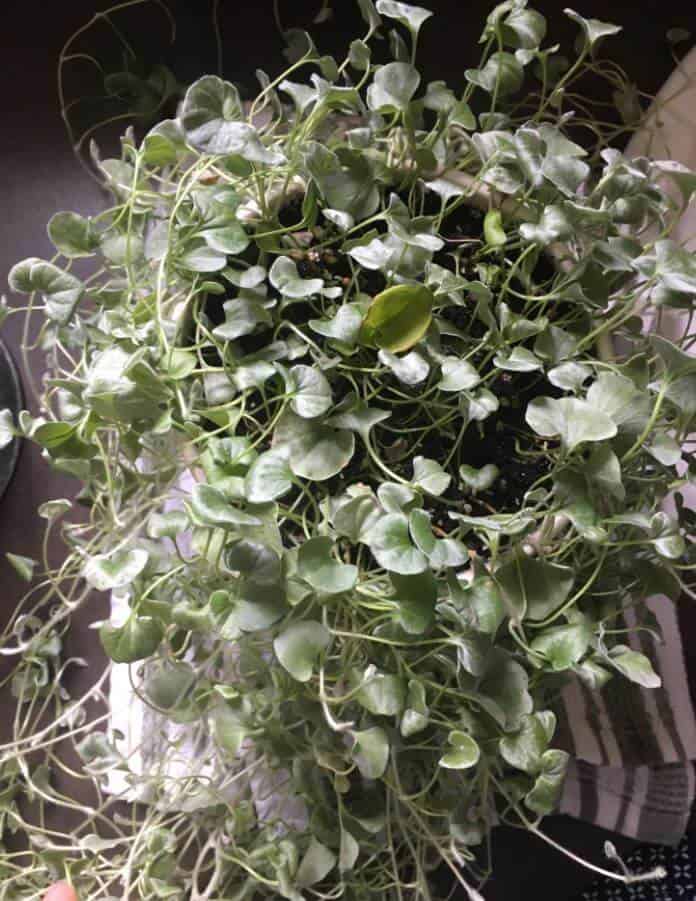
The Dichondra Silver Falls can thrive in partial shade but prefers full direct sunlight. Positioning this plant in the shade will be distressing for them. Foliage dulls when the Silver Falls does not receive adequate light. When it receives full sunlight, leaves take on a bright silvery hue. When cultivated in a container, this plant can easily be repositioned. When used as a ground cover, it can be dug up and moved if life is insufficient.
Overwatering
Silver Falls plants are native to more arid zones of Mexico and the United States, so they are at risk for overwatering. Excessive water will turn leaves yellow. If left unattended, the foliage will then turn brown, and root rot will set in. If overwatering continues it will be fatal for this plant.
Saving a Silver Falls Plant That Is Dying

If your dichondra plant is failing, make these adjustments to your plant’s environment and care routine.
Begin with refreshing your Silver Falls plant’s soil. New potting soil will boost your plant’s nutrient intake. Old potting soil often becomes hydrophobic with age and exhausts the nutrient supply. Make it a point to change the soil every two years.
Take care with the watering. For best results, test the soil bed moisture with your finger before watering. Allow your plant’s soil bed to dry out before watering. In the summer you may need to water weekly or even twice a week. In cooler seasons, watering once every two weeks may be sufficient.
Remove dying foliage and stems. Leaves and stems that have turned brown will not recover, so it’s better to prune these. This will give your plant a more attractive appearance.
Feed your plant every spring. Organic fertilizers such as aged manure, chicken manure pellets, worm casings, or compost will give a boost. One application yearly should be sufficient. Overfertilizing can damage your plant.
Finally, cure the root system, especially if your plant is in distress. Seaweed solution can be added to water for a couple of weeks when watering. This solution will feed bacteria contained in the soil bed and reinforce the root system.
Attention to the soil quality and the amount of sunlight exposure will help your Silver Falls plant thrive. Be careful not to overwater and feed your plant once annually with a dose of organic fertilizer. Your plant will reward you with a striking silvery color.

